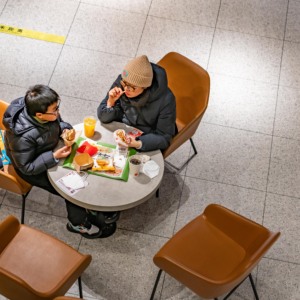By LU Yibei
NI Yili, Chairman of McKinsey China, recently noticed a change when meeting with Chinese CEOs. He could feel a sense of confusion, anxiety and even crisis.
"This was not common in the past," he said.
China is no longer impressed
According to reports, 43 percent of Chinese respondents plan to strictly control their spending next year, and 37 percent will buy cheaper products.

This year, both Luckin Coffee and Cotti Coffee tried out 9.9-yuan (US$1.39) coffee. It was a revelation on both sides. Customers, used to forking out 30 yuan for a coffee, were shocked and felt they had been overcharged, perhaps forever. The chains were shocked at how quickly so-called premium coffee lost mass appeal.
A lot has changed in five years. Back then, popular brands were new and distinctive, giving middle-class shoppers the feel of supposedly upgraded experiences. People would pay almost anything and wait for hours to take a selfie with an expensive cup of coffee.
Traditional spending practices
But today’s customers are cautious, returning to their cultural roots. Economy rather than extravagance is the traditional hallmark of Chinese wealth. If the consumer goods industry plans to prosper, value for money is perhaps the only way forward.
McKinsey - arch determinists - claim that after each economic downturn cycle, about ten percent of companies performed much better than their peers, and from 2020 to 2021, these resilient companies had a total shareholder return 50 percent higher than their competitors.
Passing on the ‘savings’
Cutting prices is just one strategy. Another way is to increase the return on investment, making the brand model lighter. In coffee and tea, brands like Naixue have introduced smaller stores with fewer choices. Tim’s China has started selling coffee in convenience stores. Franchising has lowered costs and chain brands are committed to lighter, smaller, more flexible business models.
Retail brands must cut costs from the supply side. In July, Hema Fresh began cutting prices in an attempt to take on Sam's Club. That plan ran into difficulties when Hema assumed they could simply pass on these “savings” to suppliers, who reacted angrily.
Land of milk tea and coffee
Although experiencing great changes, the market is far from pessimistic. Coffee and tea shops are simply part of the ordinary landscape of China now.
Before 2019, there were no milk-tea brands with 10,000 stores, and before 2023, no one imagined that the first coffee chain to open 10,000 stores would be Luckin. With 32,000 stores, milk-tea brand Mixue Bingcheng is the fifth-largest fast-food chain in the world.





